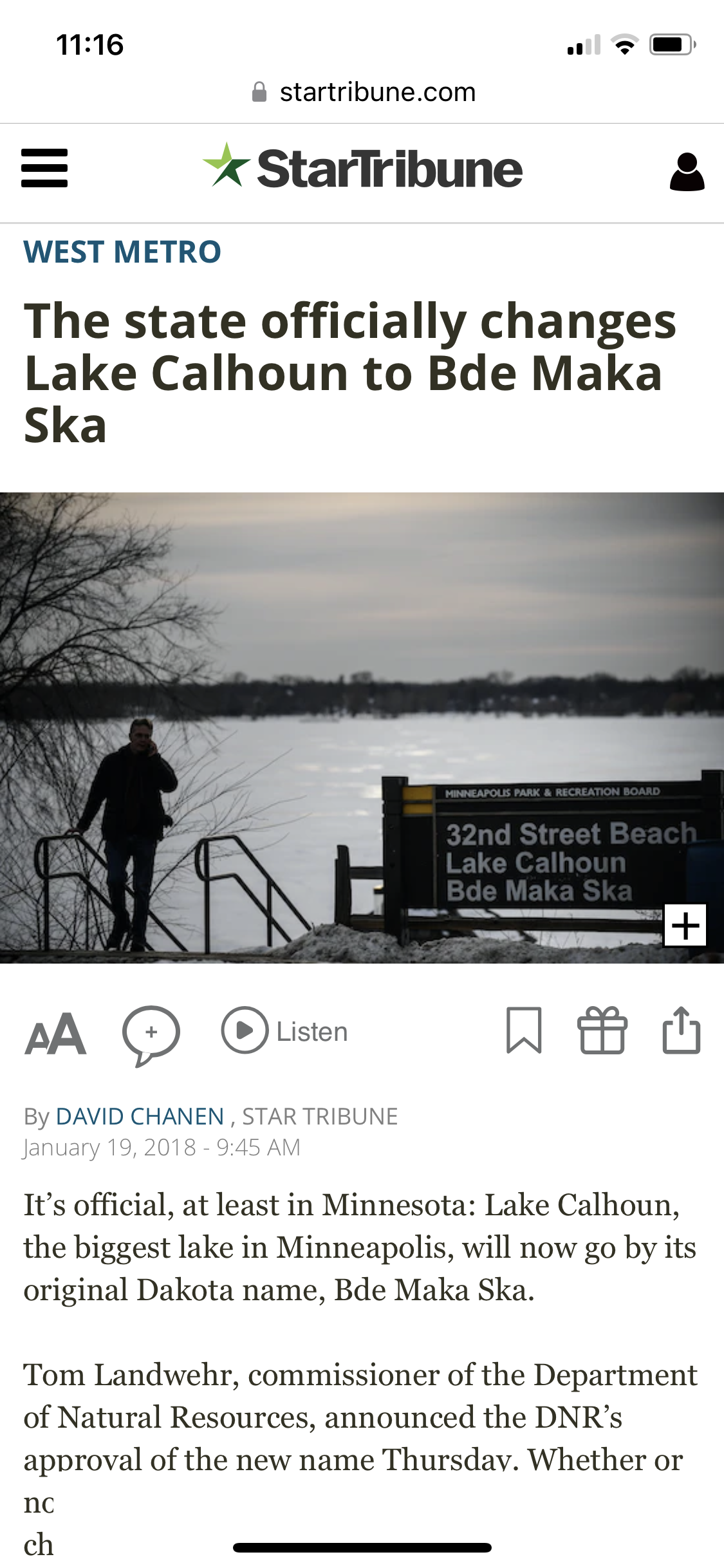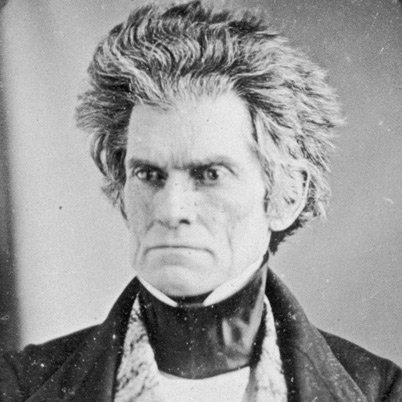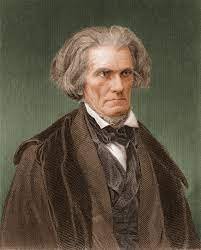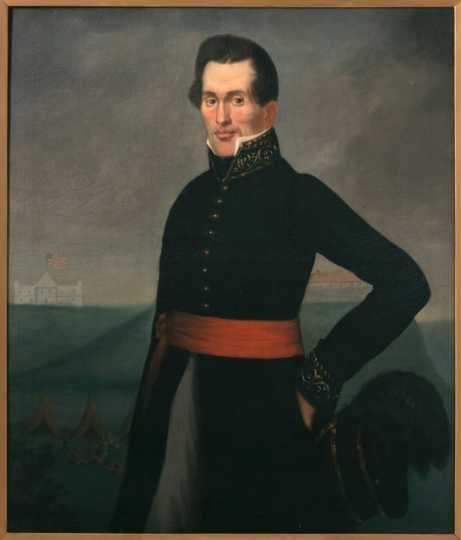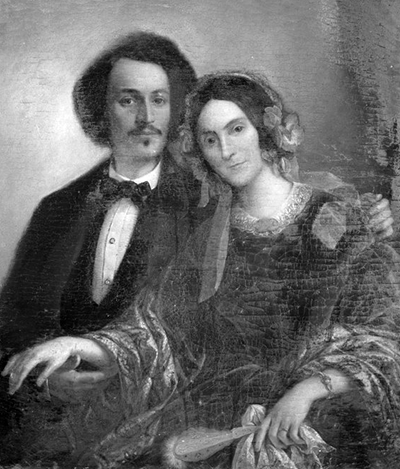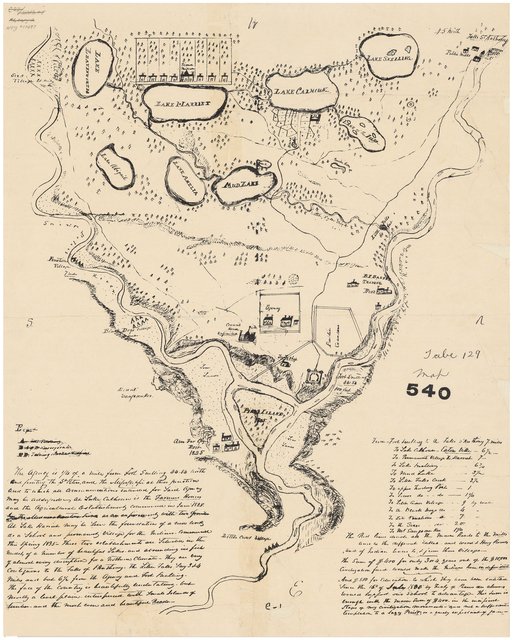Pettiness on the Shores of Bde Maka Ska
Everyone has an opinion in the Bde Maka Ska vs. Lake Calhoun debate. The 2018 renaming brought John C. Calhoun’s mostly forgotten life back into the limelight and his racist and treasonous beliefs uncovered. Unfortunately, the details of Calhoun’s abhorrent beliefs and his traitorous philosophies mainly fell on deaf ears. It seemed people were more passionate about maintaining the “familiar” instead of erasing racism. While the naming of Lake Calhoun was largely a result of standard practice and tradition, it was also due to the fact that at the time, many Americans saw him as a hero.
During the renaming debate, all of our attention focused on Calhoun and the national implications of his racist philosophies and divisive policies. In the meantime, we overlooked a lesser-known example of Calhoun’s character flaws. We missed the opportunity to examine a time when his personal pettiness brought our government to a grinding halt. We also missed the opportunity to appreciate the tit-for-tat, petty protest enacted on his namesake-lake’s shores memorializing that not all of his contemporaries were on his side.
How did the lake get its name in the first place?
In 1817, John C. Calhoun was appointed Secretary of War. In that era, dealings with the native american tribes were handled by the war department (either a symptom or a cause of the violence of their dealings). In an effort to centralize the relationships with hundreds of tribes and increase efficiency, Calhoun created the Bureau of Indian Affairs.
It was around this same time that Fort Snelling was being built and the lands around it explored. Soldiers renamed the physical features they found in honor of people important to them. Although the lakes, rivers, waterfalls and other natural features already had names given to them by the indigenous people who had lived there for millennia, colonizers did what colonizers do. Either they didn’t know what the natives called them or didn’t care and they imposed their own language on their surroundings. Most of the lakes in the vicinity of the new fort were named after the fort commanders’ wives and daughters: Harriet (Leavenworth), Abigail (Snelling), Amelia (Gooding), etc.
Major Lawrence Taliaferro
Major Lawrence Taliaferro (pronounced Tolliver) was assigned to the fort by the Bureau of Indian Affairs as its first Indian Agent. His job was to act as a negotiator, peacemaker, father-figure, account manager, supplier, educator and protector for the Dakota and Ojibwe tribes. A Virginia gentleman by birth, Taliaferro brought his southern values (and about two dozen slaves) with him to Northwest Territory.
It is unclear exactly when the Lake Calhoun got its name or who bestowed the honor. It may have been any one of the military soldiers or officers at Fort Snelling in an ode to their boss. Being a particularly successful and efficient Indian Agent in his own right, Taliaferro probably appreciated Calhoun’s efforts to streamline the department he worked in and participated in (or at least supported) naming the lake in honor of his superior.
Calhoun’s political star was on the rise due to the successes he had racked up during the War of 1812 and as Secretary of War. In 1824 he had put himself up for the Presidential election. He didn’t gain the support he needed, so he instead ran for Vice President and won. (This was before the President and Vice President ran as a combined ticket. Instead, the man with the most votes became President and Vice President was the second place prize.) Although they were from the same party, Calhoun and president-elect John Quincy Adams were not on the same page. Friction continued into the next administration when Calhoun became Vice President again under Andrew Jackson in 1828. Their relationship was already strained based on their political beliefs, but in 1829 things got personal.
Washington Matchmaker
When President Jackson took office in 1829, the office of Secretary of War needed to be filled. Jackson appointed his close friend, John Eaton, to the position. Although Eaton was quite young, having become a state senator at 28 years old, he had fought with Jackson in the War of 1812 and he was professionally qualified for the role. On the other hand, Vice President Calhoun and his wife, Floride Calhoun, didn’t believe that Eaton had the personal values his status required.
In 1818, John Eaton had met and befriended a navy soldier named John Timberlake. Timberlake was deep in debt. Eaton first tried to get government assistance for Timberlake, but when that failed he paid off the debts himself. He also got Timberlake a good posting that would bring in more money for him and his young wife, Peggy.
John and Peggy Eaton
Rumors began to spread that Eaton’s generosity was motivated by a desire to get Timberlake out of the country so that he could have Peggy for himself. When Timberlake died in 1828, gossip spread that Timberlake had committed suicide out of shame over the supposed affair. (In reality, he had died of pneumonia and heart disease.)
Just two months before Jackson was to be inaugurated in 1829, he encouraged Eaton to marry Peggy. Unfortunately for the newlyweds, their decision to marry less than a year after Peggy’s husband’s death was considered extremely improper, highly scandalous, and would send shockwaves through the entire administration.
The Petticoat Affair
Floride Calhoun, the 2nd-lady, privately offended that her husband lost the presidency, was publicly offended by the couple’s nuptials. She used her influence to encourage the other cabinet wives to shun Peggy Eaton and form an “anti-Peggy” coalition. The women refused to visit the Eatons at their home or to receive them as visitors. They denied them invitations to parties and other social events.
President Jackson was deeply offended by the “anti-Peggy” actions because his own wife, Rachel, had just been ostracized in a similar fashion. During his campaign, it was revealed that the Jacksons’ romance (37 years prior) had begun before Rachel was legally divorced. It wasn’t an affair. Rachel’s husband had abandoned her and she assumed he had divorced her. Unfortunately, she was wrong. A second wedding in 1794 legalized their union. Both Rachel and Andrew were brutally bullied by the press (even though some of accusations about Jackson were later proven true) and it took a terrible toll on Rachel’s health. She died shortly after the election and never saw her husband take office.
To make matters worse, Jackson had relied on his niece, Emily Donelson, to act as his First Lady after his wife’s death. When Emily chose to side with the “anti-Peggy” coalition and against her uncle, he was personally hurt and forced to replace her with his daughter-in-law instead.
The turmoil around the Eatons continued to snowball and it began to affect the government directly. Eaton was accused of having pro-Calhoun Cabinet members removed from their positions. Ideological disputes over tariffs and states’ rights divided the cabinet and the personal attacks just made it worse.
The dysfunction among the Cabinet got so intense that Secretary of State Martin Van Buren, who had sided with Jackson and the Eatons, volunteered to resign. This gave Jackson the opening to ask for the resignations of all of the anti-Eaton cabinet members. The shakeup resolved the immediate crisis, but the infighting continued. In the papers, the conflict was given a nickname, a play on words to express the pettiness of the motives behind the upheaval - the “Petticoat Affair”.
Eatonville
It was right at this political juncture, in the far off forests surrounding Fort Snelling, that Major Lawrence Taliaferro started a project on the shores of Lake Calhoun. The Dakota and their chief, Cloud Man (Mahpiya Wicasta), were learning to farm. Taliaferro supported Cloud Man’s efforts to settle his people and assigned Samuel and Gideon Pond to teach the villagers how to use an ox and plow.
The soldiers and locals commonly referred to the village by its Chief’s name, as most native villages were at that time. Among the Dakota, it was called Heyate Otunwe or “Village at the side”, referring to its position on the shores of the lake. But on his map in 1835, that he would include with official government papers, Taliaferro inscribed the name of the village as Eatonville. Doing so right at the same time that the Petticoat Affair was reaching its zenith, reveals whose side he was on. He offered his support for the Eatons, hundreds of miles away, unknown and unheard of outside the Northwest Territory, in his own way. He forced the political and personal rivals who refused to be in the same room together, to exist side by side - permanently.
Taliaferro’s map of the area surrounding Fort Snelling
The Fallout
In 1831, just two years into his Presidency, Jackson had had enough and accepted Van Buren’s offer to resign as Secretary of State. In short order, Jackson replaced every member of his cabinet except for the Postmaster. The upheaval also led to Calhoun resigning the Vice Presidency. Once a shoe-in as the next President, his attacks on the Eatons, Jackson and later Van Buren, tarnished his reputation and his political star lost its shine.
In the meantime, Van Buren was rewarded for his loyalty and self-sacrifice. He became the next Vice President and followed that path to become the 8th President of the United States in 1837.
Close up of the location of Eatonville on Taliaferro’s map
Meanwhile, on the shores of Lake Calhoun, Eatonville was successful for a time. More than 125 Dakota made their homes there and they brought in bountiful harvests of vegetables. The missionaries, Samuel and Gideon Pond, built a cabin near the village and wrote the first dictionary translating the Dakota language. There was hope that the village would help the Dakota assimilate into white society, but a fierce and destructive battle between the Dakota and Ojibwe brought the experiment to an end in 1839.
Forgotten Legacy
If you asked the average Minnesotan on the street who John C. Calhoun was they would not be able to tell you. Still, with this lack of knowledge, some would insist that the name of lake should still honor him. Social media is full of references to the historic name of the lake. I even catch myself saying it out of sheer habit.
But once you know more about Calhoun’s philosophies and the personal, political, legal, and national fallout that they created, it is unacceptable to keep making excuses. We try to give historical figures the benefit of the doubt and hope that they saw slavery as a “necessary evil” and assume that they only participated in the institution because it was common at the time. Calhoun, on the other hand, firmly and publicly espoused his belief that slavery was a “positive good”. His ideas went far beyond the financial benefits reaped by the south through cheap labor. His speeches explained his belief that slavery helped create a necessary social order and hierarchy. He embraced white supremacy and felt that a paternalistic ownership of the “less exceptional” was a gift that African Americans should be grateful for. While other southern leaders of his time began to realize that all Americans could agree on the "opinion and feeling" that slavery was wrong, Calhoun held firm that slavery was a natural right.
Calhoun believed so strongly in white supremacy and slave ownership that he dehumanized slaves and thought of them as nothing more than physical property. The “Calhoun Doctrine” created legal precedent that no state could prevent a citizen from crossing state lines with their property and therefore could not outlaw slavery in any state. Just as a state couldn’t prevent someone bringing their furniture to a new home in any state, they couldn’t prevent a slave owner from bringing their slaves. Although Calhoun died in 1850, it was his beliefs and the “Calhoun Doctrine” that the Supreme Court relied on in their decision in the 1857 Dred Scot v. Sandford decision. They upheld the belief that even if a slave, as its owner's property was taken to a free state, they were still property and therefore still a slave.
Calhoun’s beliefs also became the framework that the Southern states built their secessionist arguments upon. He believed that states held the right of “nullification”, the right to nullify, or invalidate, any federal law it deems unconstitutional and that states had the right to secede from the Union as a last resort to protect their freedom and sovereignty.
Jackson and Calhoun became political and personal enemies to the extent that Jackson confessed on his deathbed that he regretted not having Calhoun executed for treason. "My country would have sustained me in the act, and his fate would have been a warning to traitors in all time to come."
Now, I am no fan of Andrew Jackson. He has his own legacy to be ashamed of, but his accusations speak volumes. Calhoun singlehandedly shored up the institution of slavery and provided the framework for the Civil War. To perpetuate a place of honor for him is no different than maintaining statues of Civil War Generals in the south. To shrug our shoulders and insist that it is just “tradition”, is just as insulting to the descendants of slaves as telling them to just “get over it”. We can do better.

